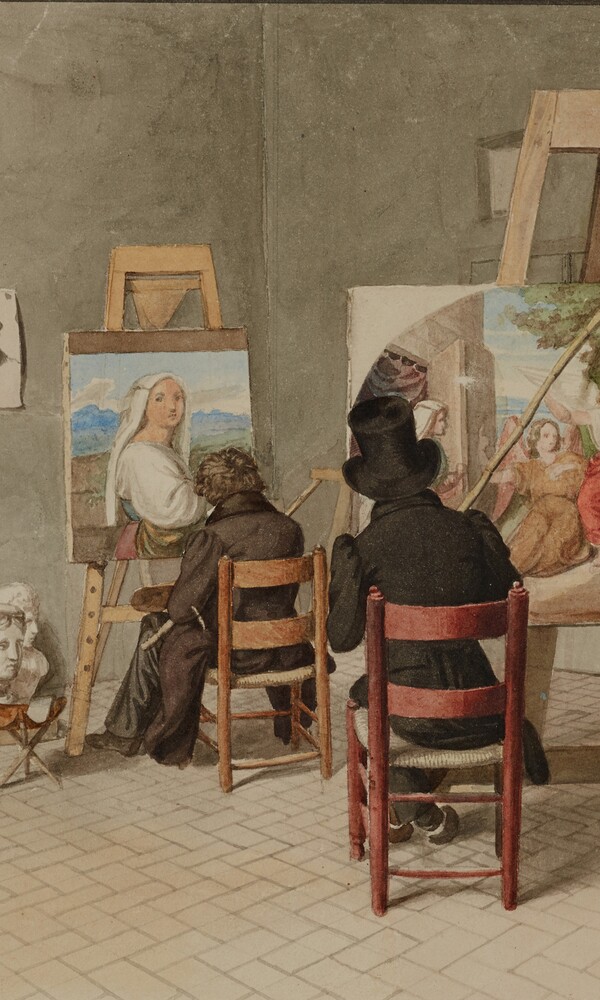Drawings and Watercolours from Three Centuries. - extended until 08 Jan. 2017
Starting in the fall of 2016 the Hamburger Kunsthalle is presenting around 120 drawings of artists, from the period of the early 17th century up to the late 19th century, drawn from a private collection never before exhibited. The collection’s focus areas are reflected in the exhibition: Next to the cities Prague and Augsburg, especially Munich had advanced to one of the most important cultural centres already before 1600. Artists like Peter Candid from the Netherlands or Friedrich Sustris worked there – both are represented in the show with major works. The international court art of Prague under the Emperor Rudolf II is exemplified by an artwork by Matthias Gundelach, who after Rudolf’s death relocated to Augsburg, where artists like Hans Rottenhammer, Lucas Kilian or Joseph Werner were unfolding a remarkable productivity. Johann Georg Bergmüller and Johann Wolfgang Baumgartner embody this development in the 18th century.
The majority of exhibits originate from the Goethe era and bear witness to the increased relevance of the art of drawing in Germany around 1800. Bodies of work by Johann Heinrich Wilhelm Tischbein and Julius Schnorr von Carolsfeld vividly illustrate the artistic and thematic richness of this art form, which without their “Italy experience” would not have been conceivable. Representatives of the Nazarene movement like Friedrich Overbeck or Joseph Führich sought a renewal of German art in religion, while others attempted to bring new impulses to landscape art, such as initially Johann Christian Reinhart or Johann Martin Rhoden and in the next generation Franz Horny, Carl Philipp Fohr, Heinrich Reinhold or Ernst Fries. Johann Georg Dillis and Franz Kobell found their motifs in Munich, where they would produce drawings of the region’s countryside and its people. Kobell’s nephew Wilhelm Kobell gave the pictures their own characteristic appeal by blending romantic and realistic elements. In Dresden, it was Adrian Ludwig Richter and his students, represented by artists like Albert Venus, Victor Paul Mohn and Heinrich Franz Dreber who established a tradition of landscape art of their own kind.
Another focus of the exhibition lies on the art scene in Hamburg: Works by artists like Jakob Matthias Weyer and Johann Moritz Riesenberger, active during the 17th century, serve as a transition to the artistic style around 1800, represented here by prominent works of Philipp Otto Runge. Drawings of his contemporaries Erwin and Otto Speckter, Julius Milde and Christian Morgenstern provide an extended insight into an art era, which, also for the Hanseatic city, proved to be extremely fruitful.
